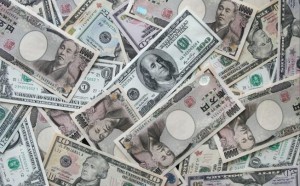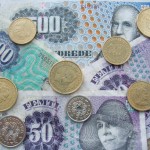 The yen declined a second day to the weakest in more than two weeks against the US dollar, after Bank of Japan boosted lending programs and announced it will continue easing monetary policy until the inflation target of 2% is reached.
The yen declined a second day to the weakest in more than two weeks against the US dollar, after Bank of Japan boosted lending programs and announced it will continue easing monetary policy until the inflation target of 2% is reached.
USD/JPY hit a session high at 102.75 at 05:15 GMT, after which consolidation followed at 102.44, adding 0.5% for the day. Support was likely to be received at February 17th low, 101.39, while resistance was to be met at January 31st high, 102.94.
The yen came under selling pressure, after Bank of Japan kept its pledge to expand the money supply, doubled part of a growth lending program and announced Japans banks may borrow twice as much low-interest money than they previously did under a second facility.
“The BOJ’s decision to stimulate the flow of money through extension and expansion of lending programs was well received,” said Yousuke Hosokawa, the head of the foreign-exchange sales team in Japan’s capital at Sumitomo Mitsui Trust Bank Ltd., cited by Bloomberg. “That is boosting risk appetite and yen selling.”
Japan’s Cabinet Office reported yesterday that the nation’s preliminary gross domestic product expanded at an annualized 1% pace in the fourth quarter, confounding analysts’ expectations for a 2.8% increase and after a 1.1% advance in the previous quarter. The weaker-than-expected data, fueled speculations BoJ will have to increase the scale of its asset-purchasing program in the coming months, which weighed on yen’s demand.
Bank of Japan has been purchasing more than 7 trillion JPY (68.4 billion USD) of government bonds each month in its struggle to achieve 2% inflation in two years since April 2013.
BoJs policy board member Takahide Kiuchi said last week that the central bank had to be cautious, when deciding to ease monetary policy further to offset the effect of a sales tax increase in April, because this could have negative side effects.
The yen devalued 18% against the US dollar last year, the most since 1979, but in January the currency rebounded 3.2% as a slump in emerging markets, fueled demand for haven assets, such as the yen.
A Bloomberg News survey of 35 economists, showed an unanimous forecast that the BoJ will expand its monthly bond purchases program worth 7 trillion yen, with only two of the respondents predicting the central bank will achieve its inflation goal by the target period, April 2015.
Meanwhile, at 13:30 GMT the United States is to release the first indicator for nation’s manufacturing activity during the current month, the New York Empire Manufacturing Index. The median estimate of experts showed that the index probably slowed down to a reading of 9.50 in February after climbing to 12.51 in January, the highest since May 2012. Positive readings are indicative of expansion in activity.
The Federal Reserve Bank is scheduled to release the minutes of its January policy meeting tomorrow.
The central bank trimmed its monthly bond buying program from $85 billion to $65 billion after two $10 billion cuts. The Fed Chairman Janet Yellen cited the harsh winter and the unseasonably low temperatures as probable reasons for the weaker-than-expected US economic data, as the cold weather has affected activity in the labor market and elsewhere.
The central bank announced its latest decision to reduce monthly monetary stimulus by 10 billion USD to 65 billion USD at the meeting on policy in January, underscoring that labor market indicators, which “were mixed but on balance showed further improvement”, while nation’s economic growth has “picked up in recent quarters.” Fed policymakers are to hold their next meeting on March 18th-19th.
The Federal Reserve will probably continue to pare stimulus, which tends to devalue the greenback, by $10 billion at each policy meeting before exiting the program in December, according to a Bloomberg News survey of 41 economists, conducted on January 10th.
Elsewhere, AUD/USD touched a daily high at 0.9081 at 1:03 GMT, also the pair’s highest level since January 13th, after which consolidation followed at 0.9046, rising 0.14% for the day. Support was likely to be found at February 14th low, 0.8981, while resistance was to be encountered at January 13th high, 0.9086.





